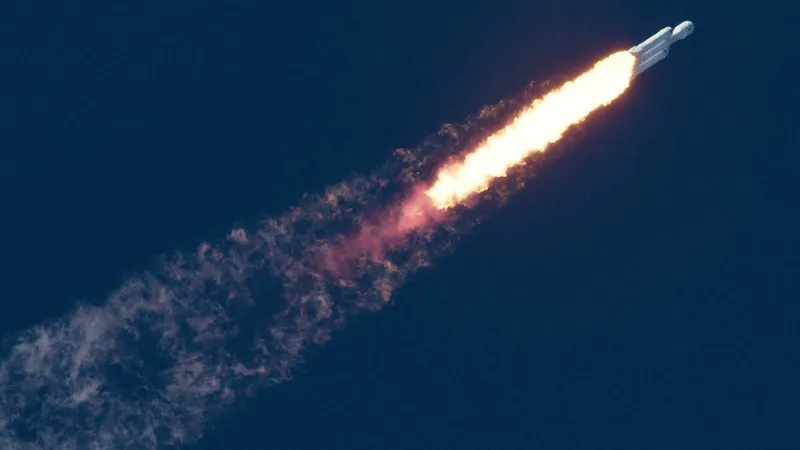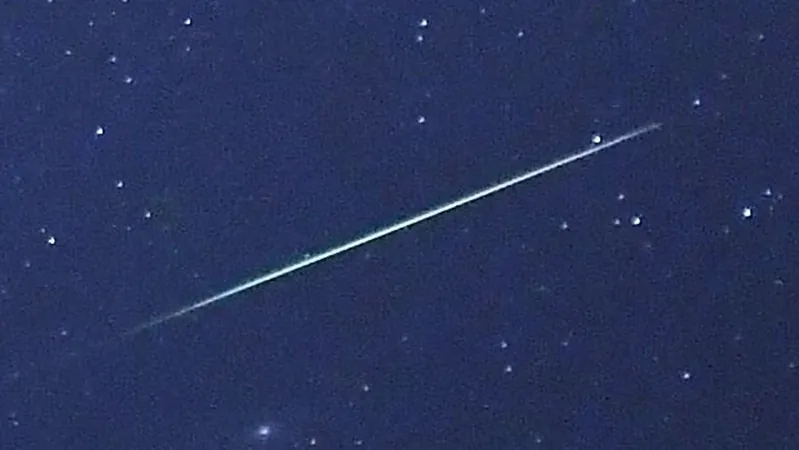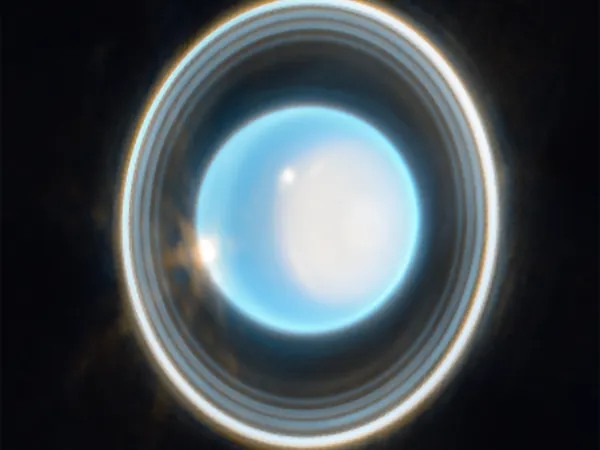
Rocket Launch Surge Threatens the Ozone Layer: Experts Urge Action
2025-07-19
Author: Noah
As the rocket launch industry skyrockets, so do concerns about its impact on the Earth's vital ozone layer. According to Sandro Vattioni, the increasing number of launches could severely hinder the recovery efforts of this critical atmospheric layer.
The Busy Night Sky: Opportunities and Concerns
In recent years, our night skies have been adorned with an influx of satellites as space ventures expand rapidly. While this advancement promises thrilling opportunities for innovation and connectivity, it also brings serious environmental challenges that are often overlooked.
Pollutants from Space: A Looming Threat
Rocket launches and re-entering debris release harmful pollutants into the middle atmosphere, jeopardizing the ozone layer, which shields life on Earth from harmful UV radiation. This emerging threat warrants urgent attention from the scientific community, which is only just beginning to grasp the full extent of the problem.
Rocket Emissions: An Underestimated Issue
Research on the effects of rocket emissions stretching back over 30 years has long downplayed their significance. However, with the number of launches skyrocketing—from 97 in 2019 to a predicted 258 by 2024—the potential damage is coming into clearer focus.
Long-Lasting Impact on Ozone
In the upper atmosphere, rocket emissions can linger for up to 100 times longer than ground-based pollutants due to a lack of cleansing processes. Most launches occur in the Northern Hemisphere, but atmospheric currents spread these hazardous materials worldwide.
Alarming Projections for 2030
Collaborating with an international team, researchers led by Laura Revell from the University of Canterbury employed cutting-edge climate models to simulate the future impact of rocket emissions. Their study predicts that if annual launches reach 2,040 by 2030, global average ozone thickness could diminish by nearly 0.3%, with seasonal declines of up to 4% over Antarctica—an area that continues to struggle with ozone depletion.
Ozone Layer Recovery at Risk
Though these figures may appear minor, the ozone layer is still coping with past injuries caused by chlorofluorocarbons (CFCs), which were eliminated by the 1989 Montreal Protocol. Currently, the ozone layer remains approximately 2% thinner than pre-industrial levels, with full recovery not expected until around 2066. Rocket emissions, unregulated and rapidly increasing, threaten to push this timeline back even further.
Fuel Matters: The Ozone Depleters
Chlorine gases and soot from rocket emissions are the primary culprits in ozone depletion. Chlorine molecules actively destroy ozone, while soot warms the atmosphere, accelerating harmful chemical reactions. Currently, only about 6% of rocket launches utilize cryogenic fuels, which produce negligible ozone-damaging effects.
The Hidden Cost of Re-Entry
Importantly, the study focused solely on emissions released during ascent. The re-entry phase of satellites—where they burn up upon returning to Earth—generates additional pollutants like nitrogen oxides and metal particles, further complicating the ozone crisis. The effects of these emissions remain poorly understood and have yet to be accurately modeled.
Urgent Call for Collective Action
To safeguard the ozone layer's recovery, scientists, policymakers, and industry leaders must join forces. Addressing the impact of rocket emissions demands monitoring, reducing the use of harmful fuels, promoting cleaner propulsion systems, and enacting effective regulations. Positive change is achievable, as a sustainable launch industry is within our grasp—if we act now.









 Brasil (PT)
Brasil (PT)
 Canada (EN)
Canada (EN)
 Chile (ES)
Chile (ES)
 Česko (CS)
Česko (CS)
 대한민국 (KO)
대한민국 (KO)
 España (ES)
España (ES)
 France (FR)
France (FR)
 Hong Kong (EN)
Hong Kong (EN)
 Italia (IT)
Italia (IT)
 日本 (JA)
日本 (JA)
 Magyarország (HU)
Magyarország (HU)
 Norge (NO)
Norge (NO)
 Polska (PL)
Polska (PL)
 Schweiz (DE)
Schweiz (DE)
 Singapore (EN)
Singapore (EN)
 Sverige (SV)
Sverige (SV)
 Suomi (FI)
Suomi (FI)
 Türkiye (TR)
Türkiye (TR)
 الإمارات العربية المتحدة (AR)
الإمارات العربية المتحدة (AR)